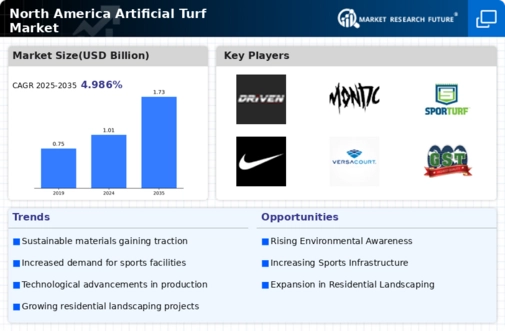The North America Artificial Turf Market is characterized by a competitive landscape that continues to evolve as demands for innovative, high-quality synthetic turf solutions grow. As this market expands, various players vie for significant market share, offering diverse product ranges that cater to different applications such as sports, landscaping, and recreational purposes. Companies in this sector are focusing on technological advancements, sustainability, and enhanced performance features in their artificial turf products to meet the increasing expectations of both commercial and residential customers.
The market's dynamic nature challenges existing companies to refine their operational strategies while continuing to develop products that address environmental concerns like water conservation and eco-friendliness. DuraFlex has established a notable presence in the North America Artificial Turf Market, driven by its commitment to quality and innovation. Focused on providing high-performance synthetic turf products, DuraFlex has built a reputation for delivering durable and aesthetically pleasing solutions that meet the rigorous demands of various applications ranging from athletic fields to residential lawns.
The company has implemented advanced manufacturing processes, ensuring that its turf products are not only safe and reliable but also environmentally friendly. This commitment to sustainability positions DuraFlex favorably in the eyes of consumers increasingly concerned about the ecological impact of their purchasing decisions. Furthermore, the firm’s adaptability and responsiveness to market trends have empowered it to retain a strong competitive edge in the region. Mondo operates within the North America Artificial Turf Market with a focus on high-quality athletic surfaces and specialized synthetic solutions.
Known for its innovative approach, Mondo emphasizes research and development, resulting in products that enhance performance for competitive sports venues, training facilities, and recreational areas. The company’s lineup includes a range of synthetic turf products that cater to various sports, such as soccer, football, and field hockey. Mondo has successfully positioned itself not only through product innovation but also through strategic mergers and acquisitions that have strengthened its market presence in North America. By continuously investing in sustainability and integrating eco-conscious practices into its operations, Mondo appeals to environmentally aware consumers, boosting its competitive standing in the artificial turf landscape.


























Leave a Comment